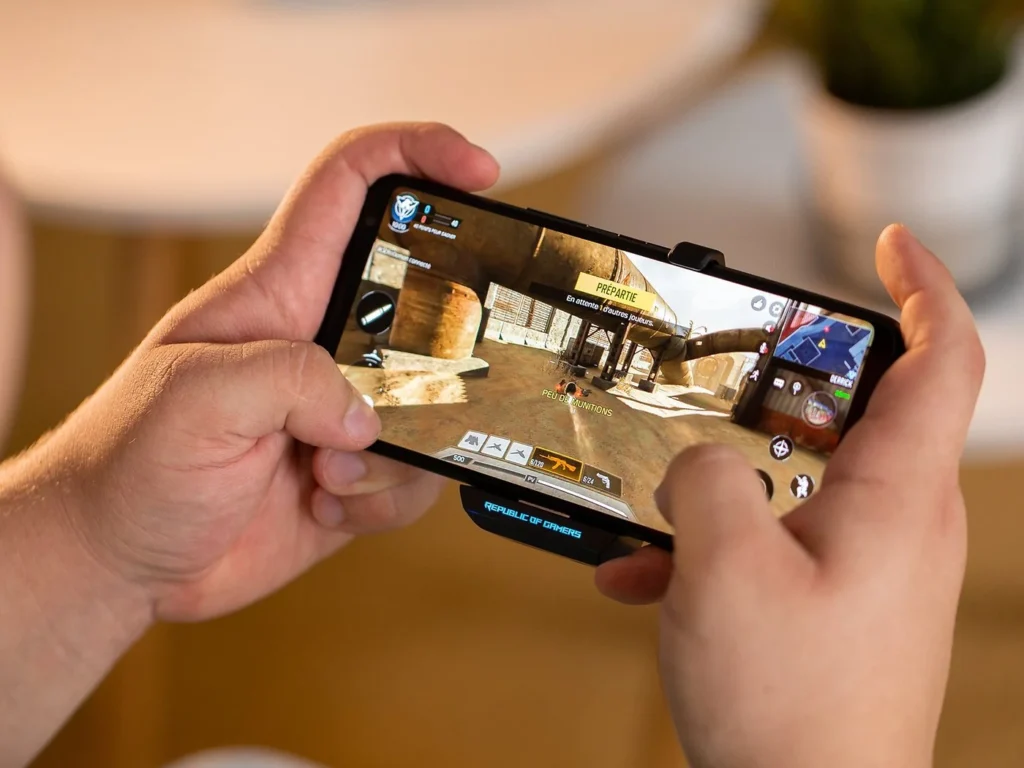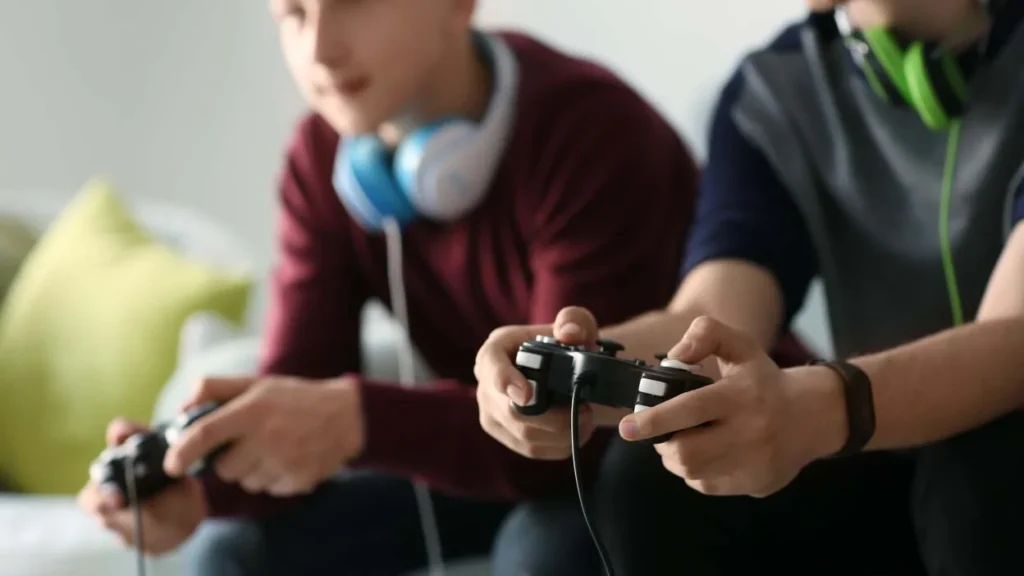
Imagine this: It’s a lazy Sunday afternoon, and I’m sprawled on the couch, thumb furiously tapping my phone screen, chasing high scores in a rhythm-based tapping game. My heart races as I hit each note perfectly, dodging obstacles with split-second precision. What started as a way to kill time turned into an unexpected workout for my brain and hands. That’s when it hit me—tapping games aren’t just fun; they’re secretly training my hand-eye coordination in ways I never imagined. Whether you’re a casual gamer or someone looking to sharpen your reflexes, tapping games offer a surprising blend of entertainment and skill-building. In this deep dive, we’ll explore how these simple yet addictive games enhance hand-eye coordination, backed by science, expert insights, and practical tips to level up your skills.
What Are Tapping Games, Anyway?
Tapping games are mobile or touchscreen-based games that rely on quick, precise taps or swipes to interact with on-screen elements. Think of classics like Piano Tiles, where you tap moving tiles to play a song, or Fruit Ninja, where you slice fruit with swift swipes. These games are designed to be intuitive, requiring minimal learning curves but demanding sharp reflexes and focus. Their simplicity is deceptive—beneath the colorful graphics lies a powerful tool for improving motor skills and cognitive processing.
Tapping games come in various flavors, from rhythm-based challenges to action-packed arcade-style titles. They all share one core mechanic: syncing your hand movements with visual cues. This constant interplay between what you see and how you react is where the magic happens for hand-eye coordination. As I discovered during my Sunday gaming marathon, the more I played, the better I got at anticipating patterns and reacting faster. It wasn’t just about getting a high score—it was about training my brain and hands to work in harmony.
The Science Behind Hand-Eye Coordination
Hand-eye coordination is the ability to synchronize visual input with hand movements. It’s a complex process involving your brain, eyes, and muscles working together seamlessly. When you tap a moving tile in a game, your brain processes the tile’s position, speed, and trajectory, then sends signals to your fingers to act at the precise moment. This process relies on the cerebellum, the brain’s coordination hub, and the visual cortex, which interprets what you see.
Studies show that activities requiring rapid visual-motor integration, like tapping games, can enhance neural pathways. A 2014 study published in Frontiers in Human Neuroscience found that action video games improve sensorimotor skills, including hand-eye coordination, by strengthening connections between the brain’s visual and motor regions. Tapping games, with their fast-paced demands, fit this mold perfectly. They’re like a gym for your brain, building stronger, faster connections with every tap.
But it’s not just about neurons firing. Tapping games also train your proprioception—your sense of where your body is in space. As you swipe to slice fruit or tap to hit a beat, you’re fine-tuning your ability to control your movements with precision. Over time, this translates to real-world skills, from typing faster to catching a ball mid-air.
Why Tapping Games Are Perfect for Coordination Training
Tapping games aren’t just another form of entertainment; they’re uniquely suited to boosting hand-eye coordination. Here’s why they stand out:
- Fast-Paced Challenges: Unlike slower-paced games, tapping games demand quick reactions, forcing your brain to process visual cues in milliseconds. This intensity mirrors real-life scenarios where split-second decisions matter, like driving or playing sports.
- Progressive Difficulty: Most tapping games start easy but ramp up in speed and complexity. This gradual increase pushes your coordination skills to new levels without overwhelming you. For example, in Geometry Dash, you start with simple obstacles but soon face intricate patterns that test your limits.
- Repetition with Variation: Tapping games blend repetition (tapping or swiping) with unpredictable patterns, keeping your brain engaged. This balance prevents boredom while reinforcing muscle memory.
- Instant Feedback: Hit a tile correctly? You get a satisfying sound or score boost. Miss it? The game lets you know immediately. This real-time feedback helps you adjust your movements on the fly, a key component of motor learning.
I remember my first time playing Piano Tiles. I fumbled through the early levels, my fingers tripping over each other. But after a few rounds, I started to “feel” the rhythm, my taps syncing effortlessly with the music. That sense of progress wasn’t just satisfying—it was proof my coordination was improving.
Who Can Benefit from Tapping Games?
Tapping games aren’t just for gamers. Their accessibility makes them a valuable tool for a wide range of people:
- Kids and Teens: Developing hand-eye coordination is crucial for young people, as it supports academic skills like writing and physical activities like sports. Games like Fruit Ninja can make training feel like play, encouraging consistent practice.
- Adults: Whether you’re a professional needing sharp reflexes (think surgeons or pilots) or just want to stay mentally agile, tapping games offer a low-stakes way to hone your skills. They’re also a great stress-reliever after a long workday.
- Seniors: Aging can slow reaction times, but tapping games can help maintain cognitive and motor function. A 2017 study in Neurology showed that video games can improve cognitive flexibility in older adults, and tapping games are an easy entry point.
- Athletes and Performers: From dancers to tennis players, anyone relying on precise movements can benefit. Tapping games mimic the timing and accuracy needed in high-performance activities.
I recently introduced my 60-year-old dad to Beat Saber, a VR rhythm game with tapping elements. At first, he laughed off the idea, but after a few sessions, he was hooked, proudly showing off his improved scores. Watching him swing to the beat, I realized these games aren’t just for kids—they’re for anyone willing to tap into their potential.
### Tapping Games vs. Other Activities: A Side-by-Side Comparison
To understand how tapping games stack up against other coordination-building activities, let’s break it down in a clear, visual way.
| Activity | Hand-Eye Coordination Benefits | Accessibility | Engagement Level | Cost |
|---|---|---|---|---|
| Tapping Games | High—fast-paced, repetitive tasks improve visual-motor integration and reaction time. | Very high—available on smartphones, minimal learning curve. | Very high—addictive, rewarding gameplay. | Low—many free options, minimal equipment needed. |
| Sports (e.g., Tennis) | High—requires tracking moving objects and precise movements. | Moderate—requires equipment, space, and often training. | High—social and physical benefits. | Moderate to high—gear, lessons, or court fees. |
| Playing an Instrument | Moderate to high—demands timing and finger dexterity but less focus on rapid reactions. | Low—requires lessons, practice, and instruments. | High—creative and rewarding. | High—cost of instruments and lessons. |
| Traditional Video Games | Moderate—varies by game; some require strategy over reflexes. | Moderate—may need consoles or PCs. | High—story-driven or competitive. | Moderate to high—consoles, games, or subscriptions. |
| Art/Crafts (e.g., Drawing) | Low to moderate—improves fine motor skills but less emphasis on speed or visual tracking. | High—basic supplies are affordable. | Moderate—depends on personal interest. | Low to moderate—cost of materials. |
Key Takeaway: Tapping games shine for their accessibility and engagement, making them an ideal choice for anyone looking to boost hand-eye coordination without breaking the bank or needing specialized equipment.
How Tapping Games Train Your Brain and Body
Let’s get into the nitty-gritty of how tapping games work their magic. Each tap or swipe engages multiple systems in your body, creating a feedback loop that strengthens your coordination over time.
Visual Processing
When you play a tapping game, your eyes track moving objects—tiles, fruit, or obstacles—on the screen. This trains your ability to process visual information quickly, a skill known as visual attention. Games like Piano Tiles force you to focus on multiple elements at once, improving your ability to filter out distractions and zero in on what matters.
Reaction Time
Tapping games are all about speed. The faster you react to a visual cue, the better you perform. Over time, this reduces your reaction time—the gap between seeing something and responding. A 2010 study in Current Directions in Psychological Science found that action games can cut reaction times by up to 15%, and tapping games, with their relentless pace, deliver similar results.
Fine Motor Skills
Tapping isn’t just about speed; it’s about precision. Games like Geometry Dash require you to tap at exact moments to avoid obstacles, training your fingers to move with accuracy. This fine motor control is crucial for tasks like writing, typing, or even surgery. As someone who’s always struggled with neat handwriting, I’ve noticed my penmanship improve slightly since I started playing tapping games regularly—proof that small movements matter.
Cognitive Load Management
Tapping games often throw multiple challenges at you: track the rhythm, avoid obstacles, and keep an eye on your score. This cognitive load forces your brain to prioritize tasks and make quick decisions. Over time, you get better at managing stress and multitasking, skills that spill over into daily life.
One evening, I was playing Fruit Ninja during a particularly hectic week. Work deadlines were looming, and my brain felt fried. But as I sliced through watermelons and dodged bombs, I found myself calming down, my focus sharpening. It was like the game was teaching me to handle chaos—one tap at a time.
Practical Tips to Maximize Coordination Benefits
Ready to tap your way to better hand-eye coordination? Here are actionable tips to get the most out of your gaming sessions:
- Choose the Right Game: Start with beginner-friendly games like Piano Tiles or Tap Tap Dash. As you improve, try more complex titles like Beat Saber or Osu! to push your limits.
- Play in Short Bursts: Aim for 10–15 minute sessions to stay focused without straining your eyes or hands. Overdoing it can lead to fatigue, which hampers progress.
- Mix Up Game Types: Alternate between rhythm games, action games, and puzzle-based tappers to train different aspects of coordination. Variety keeps your brain engaged.
- Focus on Form: Hold your device comfortably and use light, controlled taps to avoid strain. Good posture also helps you stay alert.
- Track Your Progress: Many games show your scores or reaction times. Monitor these to see how you’re improving and set small goals to stay motivated.
- Combine with Other Activities: Pair tapping games with physical exercises like juggling or sports to reinforce coordination in different contexts.
I started with short sessions of Piano Tiles during my commute, and within a month, I was hitting high scores I never thought possible. The key was consistency—those 10-minute bursts added up, and my reflexes felt sharper in everyday tasks like catching my keys before they hit the floor.
Potential Downsides and How to Avoid Them
Like any activity, tapping games have their downsides if not approached mindfully. Here’s what to watch out for:
- Eye Strain: Staring at a screen for too long can cause discomfort. Follow the 20-20-20 rule: every 20 minutes, look 20 feet away for 20 seconds.
- Repetitive Strain Injuries: Over-tapping can strain your fingers or wrists. Take breaks, stretch your hands, and use ergonomic grips if needed.
- Addiction Risk: Tapping games are designed to keep you hooked. Set time limits to avoid neglecting other responsibilities. I once lost track of time playing Fruit Ninja and missed a dinner plan—lesson learned!
- Diminishing Returns: After a certain point, your coordination gains may plateau. Switch to new games or increase difficulty to keep challenging yourself.
By balancing gaming with rest and variety, you can enjoy the benefits without the drawbacks. It’s all about moderation and mindfulness.
Real-World Applications of Improved Coordination
The skills you build through tapping games don’t stay confined to your phone screen—they translate to real-world scenarios. Here are a few examples:
- Sports Performance: Improved reaction times and precision can make you a better tennis player, golfer, or martial artist. Tracking a fast-moving ball or opponent becomes easier.
- Professional Skills: Jobs like surgery, dentistry, or graphic design require steady hands and quick reactions. Tapping games can serve as a low-stakes practice ground.
- Daily Tasks: From typing faster to catching a falling glass, better coordination makes everyday life smoother and less accident-prone.
- Cognitive Health: Regular coordination exercises, including gaming, can support long-term brain health, reducing the risk of age-related decline.
I noticed this firsthand when I started playing pickup basketball with friends. My reflexes, honed by months of tapping games, helped me steal the ball more often, earning me some surprised looks from my teammates. It was a small but satisfying win, proof that gaming skills can shine off-screen.
### Frequently Asked Questions About Tapping Games and Hand-Eye Coordination
1. Can tapping games really improve hand-eye coordination, or is it just a myth?
Yes, they can! Research, like the 2014 Frontiers in Human Neuroscience study, shows that action-based games enhance visual-motor skills. Tapping games, with their fast-paced mechanics, train your brain to process visual cues and respond quickly, directly boosting coordination.
2. How long does it take to see improvements in coordination?
It varies, but consistent play (10–15 minutes daily) can lead to noticeable improvements in 2–4 weeks. Progress depends on the game’s difficulty, your starting skill level, and how often you play.
3. Are tapping games suitable for kids?
Absolutely! They’re engaging and accessible, making them great for developing coordination in children. Just monitor screen time and choose age-appropriate games to avoid overstimulation.
4. Do tapping games have benefits beyond coordination?
Yes, they can improve focus, multitasking, and stress management. They also offer a fun way to build cognitive flexibility, especially for older adults.
5. Can too much gaming harm my coordination?
Overdoing it can lead to fatigue or strain, which might temporarily reduce performance. Stick to short sessions, take breaks, and stretch to stay in top form.
6. What’s the best tapping game for beginners?
Piano Tiles and Fruit Ninja are great starting points due to their simple mechanics and gradual difficulty curves. They’re fun and effective for building coordination.
Conclusion: Tap Your Way to Sharper Skills
Tapping games are more than just a way to pass the time—they’re a powerful, accessible tool for enhancing hand-eye coordination. From the science of neural pathways to the thrill of hitting a perfect combo, these games engage your brain and body in ways that ripple into everyday life. Whether you’re a student aiming to ace your next sports game, a professional sharpening your precision, or a senior looking to stay agile, tapping games offer a fun, low-cost way to level up your skills.
My own journey with tapping games started as a casual distraction but grew into a surprising source of growth. I’ve gone from fumbling through Piano Tiles to confidently slicing fruit in Fruit Ninja, all while noticing small but meaningful improvements in my reflexes and focus. The beauty of these games lies in their simplicity—anyone with a smartphone and a few minutes to spare can start tapping their way to better coordination.
So, what’s next? Download a tapping game that sparks your interest, set a daily goal, and track your progress. Mix in some real-world activities like sports or crafts to amplify your gains. Most importantly, have fun—because when skill-building feels like play, you’re already winning. What game will you try first, and how will you tap into your potential? The screen’s waiting.
















